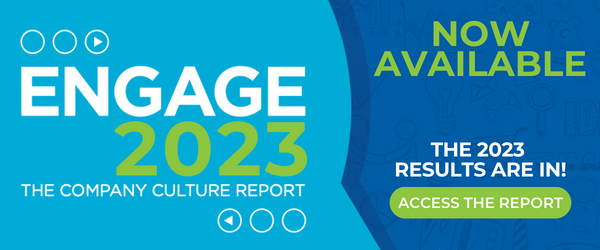
Knowing how important employee engagement is to the success of your business, you conducted an employee engagement survey to see how engaged your employees are in the current environment.
Now that you have these results, what you do with them will also make a difference in the engagement of those working for you.
The first thing you need to do is dissect all the results tell you. It is important to uncover both what you are doing well and what opportunities you must improve to grow your employee engagement levels. Understanding what you do well provides insight into what is working and what you need to continue to do. When you uncover areas of opportunity, you should see this as a gift and know your employees are sharing ways you can better engage them.
To move the needle on your engagement results, you should:
- Review the impact the results have on the engagement of your team, both your strengths and your opportunities.
- Narrow the top three areas you feel need the most attention.
- Focus on ONE area of opportunity that will be your main focus for the year.
- Create strategies you can implement around this focus area.
- Share the results and next steps with everyone.
The Impact Results Have On The Engagement Of Your Team
With the employee engagement surveys we use, each question asked has a different level of how impactful the statement is to a team. Impact levels vary by company and are based on the overall sentiment employees are sharing.
We see a range of Impact levels: Extreme, Very High, High, Medium, Low, Insignificant, or no impact. It is very important to pay attention to the statements that have an Extreme or Very High impact because when you pay attention to these areas, the overall growth of engagement will move greater than those with a lower impact.
Narrow The Top Three Areas You Feel Are The Most Important
Once you have zoned in on those areas with the greatest impact, you need to begin to narrow your focus. By narrowing your focus, you are more prone to be consistent in paying attention to those impactful areas instead of spreading yourself too thin.
To avoid going overboard on trying to “fix” your team’s engagement, it will be valuable to narrow yourself to three areas that stand out the most to you. As a leadership team, discuss these areas, impact on engagement, and why you believe you can make an impact here.
Focus On ONE Area Both You And Your Leadership Team Can Hold Each Other Accountable For Doing
It may have been difficult to narrow yourself to three areas of opportunity, but now you need to zone in on ONE area you can focus all your attention on.
When you take on too much at once, nothing gets done the way you anticipated. Narrowing to the most important focus area will move the needle on all three of your areas of opportunity. As leaders, it will be easier to hold each other accountable for taking action if everyone is aligned together on one item.
Create Strategies You Can Implement To Move The Needle In Your ONE Area Of Focus
Now that you have narrowed your focus to one area of opportunity, it is time to decide how to take action.
As a leadership team, share ideas that could make a difference in this area. It is okay to have a lot of strategies in this one area. Everyone is unique and may take a different approach.
Sharing strategies may also create lightbulb moments for leaders who may need to change their current style. Adding positive habits can affect your culture greatly.
Share Results With Everyone Who Works There
We find that most companies conduct engagement surveys but never share the results with their employees. The message this sends is that you don’t plan to do anything about what they shared with you.
When employees take the time to share what is on their minds, leaders must follow up on the findings to show they are listening and have a plan of action for the next steps. Doing this builds trust and is an important step in the engagement process.
We suggest holding a Townhall style to share results. To prepare for this meeting,
- Invite every employee to attend
- Share your survey results
- Address any plans you may have to improve moving forward
- Encourage employees to ask questions and share their thinking
- Try to respond to all questions in an upfront and honest way.
Although there may be things you are unable to share during this Townhall, your goal should be to provide transparency. This is a huge step to earning their trust.
Conclusion
Conducting an employee engagement survey is a great first step, allowing you to uncover areas of opportunity and develop the next steps you should take to create the culture you WANT to have in your company. What you do after the survey is key to building trust with both your leadership team and all your employees.
When you share results, provide the clear next steps you plan to implement, and then TAKE ACTION. This will show your employees you listened, and that their voice was valued.
Also, consider including your focus area as a topic in monthly leadership meetings. Ask leaders what strategies they have implemented and ask them to share the positive changes they have seen. Keeping engagement front and center allows others to see that it is a priority for you.











Leave a Comment